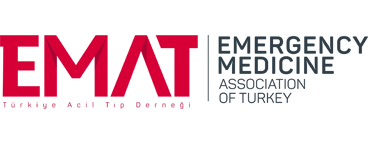To Dear Editor,
We read with interest the study titled “Evaluation of Factors Affecting the Success of Non invasive Mechanical Ventilation in Acute Cardiogenic Pulmonary Edema in the Emergency Department” by Urgancı et al. [1] This study, which investigates predictors of noninvasive mechanical ventilation (NIMV) in patients with acute cardiogenic pulmonary edema (ACPE) in the emergency department makes a valuable contribution to the literature. However, several important aspects require further consideration to enhance the impact and applicability of the findings.
Primarily, the lack of echocardiographic data is a significant limitation when evaluating factors associated with NIMV failure. Without determining whether ACPE is due to hypertensive, ischemic, or valvular disease, the impact of these factors on NIMV success cannot be adequately understood.[2]
In addition, the relationship between NIMV failure and in hospital mortality could have been better analyzed. While the in hospital mortality rate in patients with NIMV failure was reported as 75.7%, it remains unclear whether this high mortality rate was actually due to NIMV failure, the severity of the underlying disease, or additional problems accompanying ACPE. Therefore, multivariate analyses were necessary to determine whether NIMV failure is an independent predictor of mortality.
Although patients with malignancy were included in the study and it was stated that this patient group carries a higher risk for NIMV failure, the underlying mechanism of this relationship has not been fully explained. It remains unclear whether NIMV failure in these patients stems from the malignancy itself or from factors such as overall poor prognosis and muscle fatigue. In addition, the effects of cancer treatments such as chemotherapy and radiotherapy on pulmonary function have been overlooked; the study also did not differentiate between malignancy subgroups (hematological malignancies vs. solid tumors). The inclusion of patients with malignancies in the study is an important factor that could affect the generalizability of the study and the accuracy of the results. Therefore, patients with malignancy should be analyzed as a distinct subgroup, and the results should be interpreted accordingly.
The study reported a significant association between high lactate levels and NIMV failure. However, the source of lactate elevation was not thoroughly examined. Sepsis or systemic inflammation could also contribute to increased lactate levels.[3,4] Notably, the study did not investigate the relationship between sepsis or infection markers (e.g., CRP, procalcitonin) and lactate levels, making it challenging to interpret the impact of lactate elevation on NIMV failure. Given that approximately 20%–30% of ACPE patients in the emergency department present with concurrent infection, attributing lactate elevation solely to NIMV failure without ruling out sepsis may lead to misleading conclusions.[2] In addition, the increased need for inotropic support in the NIMV failure group, as reported in the study, further supports the possibility of underlying infection. Therefore, a more comprehensive analysis should have been conducted to determine whether lactate levels are an independent predictor of NIMV failure or merely a consequence of malignancy or sepsis.
The difference in success rates between continuous positive airway pressure (CPAP) and bilevel positive airway pressure (BIPAP) modes was not thoroughly detailed in the study. Although BIPAP was found to be more strongly associated with NIMV failure, the underlying reasons for this association were not explained. Despite BIPAP being generally considered a more effective option for hypercapnic patients, the study did not include a separate analysis for this patient subgroup.[5] This omission raises the question of whether the differences in failure rates between CPAP and BIPAP are related to patient selection rather than the ventilation mode itself. A more detailed evaluation of patient characteristics and underlying respiratory conditions could provide further clarity on this issue.
In conclusion, while this study provides a significant contribution to identifying predictors of NIMV failure in ACPE, the impact of additional variables such as malignancy, elevated lactate levels, and sepsis should have been examined in greater detail. Despite its valuable contributions, certain methodological limitations highlight the need for further research in this area.


